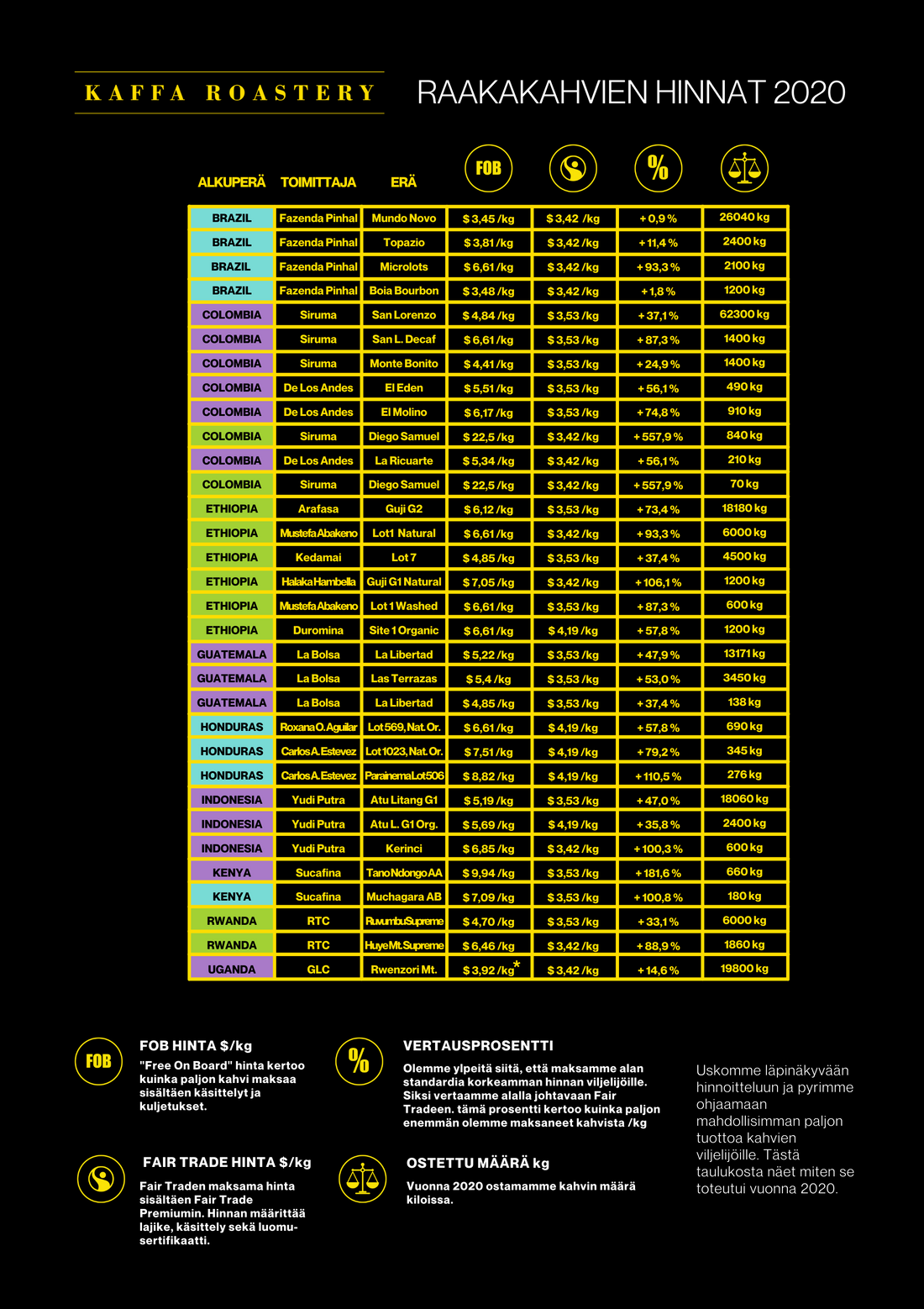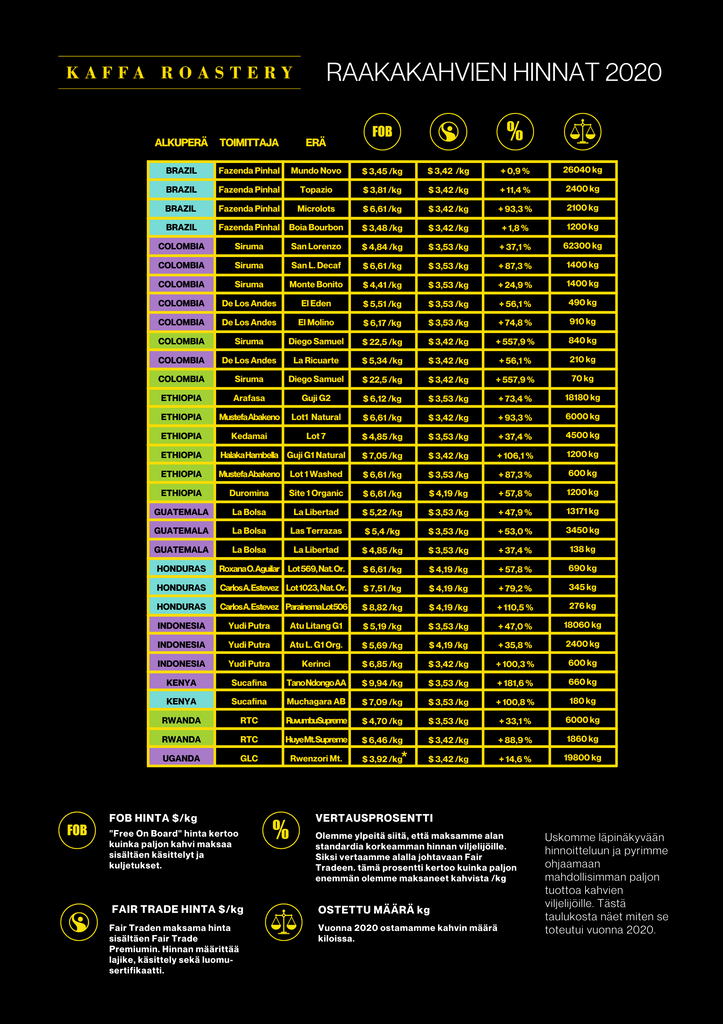
Green coffee prices for Kaffa Handshake, 2020
Share
What did the price of coffee look like in the turbulent year of 2020? And how does it look like now? Each year we collect and table our past years green coffee FOB prices. This is part of our transparency promise, in which we aim to funnel as much income as possible into our farmer partners and communicate that amount to all our partners and customers. You can now find our 2020 green coffee prices here and in the sustainability part of our website.

We take great pride in being able to compensate for our green coffee fairly and ethically. To ensure this we compare our pricing to the industry leader certificate, Fair Trade, and their pricing structure. We are in no way stating that the specific lots would have been sold to Fair Trade for this price had we not them. This is simply a way to demonstrate the great difference in the price farmers are able to receive from their crop from a small roastery when they in turn put great effort into growing specialty grade coffee. We source our coffees through our partner Falcon coffee, a company that exists to build collaborative supply chains for mutual profit and positive social impact in the coffee industry. You can read more about Falcon here.
Our farmers do not need to pay certification fees in order for us to purchase coffee from them. What they do have to do though is invest into equipment and pay a fair salary for all the workers, as well as oversee human rights compliance and use environmentally friendly processes. This is their promise for us, and our promise is to appreciate the raw material and to compensate for it fairly.
Last year the world experienced an unseen amount of uncertainty and some of our partners have struggled to deliver their crops due to the closures and layoffs caused by the CV. However, the main threat to the coffee industry continues to be climate change. Widespread drought and frosts in some of the larger coffee producing countries have caused the stock price of coffee to rise up to 55% this year (2021) and we expect this chart to look very different in the coming years.
In 2020 we received one lot that did not fully comply with our pricing standard for Kaffa Handshake. This specific lot came from Uganda, a country that was hit extremely hard with drought in 2020. Our regular producers were short of coffee, so we were left with no choice but to purchase another lot allocated for us, from the same area but through a different producer, in order to secure the production of our coffee blends. In total, the average payment made for a kilo of coffee for this exporter remained above our pricing promise. You can see the little star next to the Ugandan coffee in this chart. This is the average paid for a kilo of coffee from GLC. The price for Lot Rwenzori 25 defects: Mwezi specifically was 2,66€ /kg.
We are currently in the process of figuring out how the coffee market price growth in 2021 will affect the price we pay our farmers and in turn the pricing of our products for our customers in the future. One thing is for sure: we will not expect our partners to be the ones carrying the financial burdens on their own. We will continue to buy coffee that is ethically produced and pay a good price for it.
Should you have any questions about the coffee prices in 2020, don’t hesitate to reach our roasters at roasters@kaffaroastery.fi!
4 comments
Yes! Finally something about d-change.net.
Do you mind if I quote a few of your articles as long as I provide credit and sources back to your
blog? My blog is in the very same niche as yours and my users
would certainly benefit from some of the information you present here.
Please let me know if this alright with you.
Regards!
Hi, after reading this remarkable piece of writing i am
also cheerful to share my experience here
with friends.
Piece of writing writing is also a excitement, if you be familiar with
afterward you can write or else it is complex to
write.
https://skdjht3eigjsfdgfddf.com